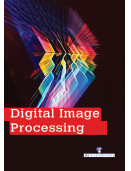Computer Science

Image processing is a physical process used to convert an image signal, either digital or analog, into a physical image. The actual output itself can be an actual physical image or the characteristics of an image. Digital image processing is the use of computer algorithms to perform image processing on digital images. As a subcategory or eld of digital signal processing, digital image processing has many advantages over analog image processing.
It allows a much wider range of algorithms to be applied to the input data and can avoid problems such as the build-up of noise and signal distortion during processing. Since images are de ned over two dimensions digital image processing may be modeled in the form of multidimensional systems. Digital image processing allows the use of much more complex algorithms, and hence, can o er both more sophisticated performance at simple tasks, and the implementation of methods which would be impossible by analog means.